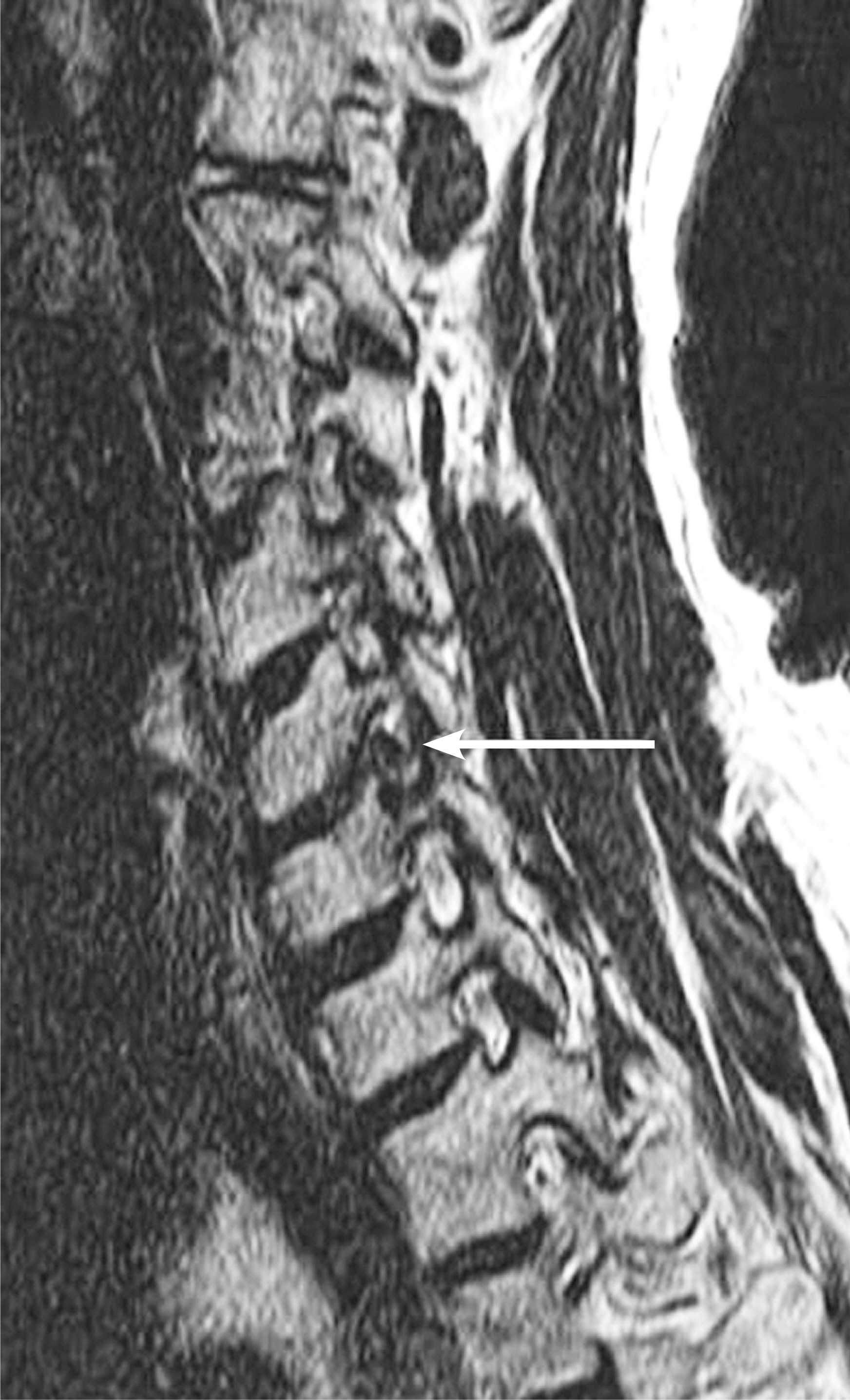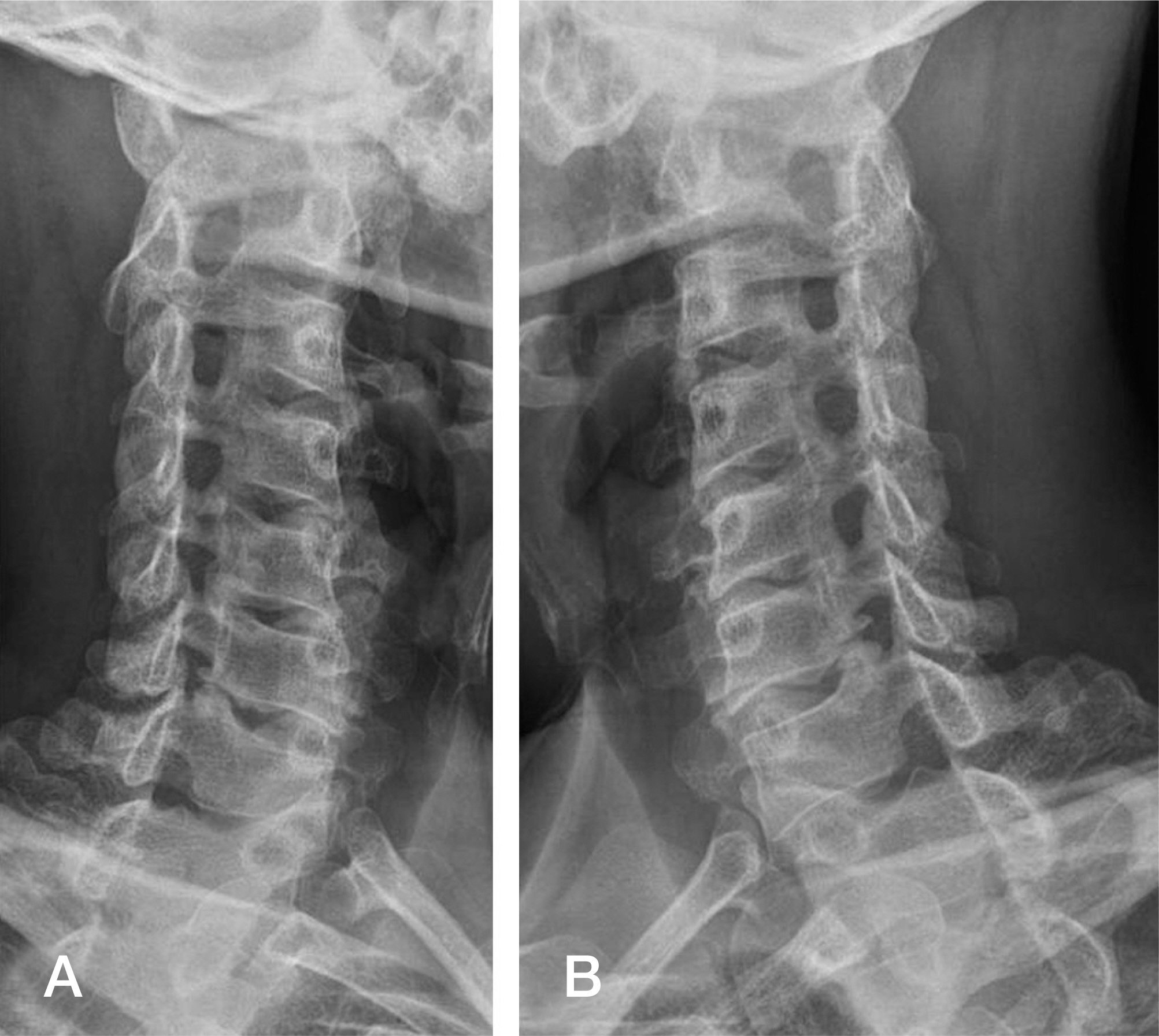J Korean Soc Spine Surg.
2016 Mar;23(1):63-69. 10.4184/jkss.2016.23.1.63.
Whiplash Injury
- Affiliations
-
- 1Department of Orthopaedic Surgery, Hallym University Sacred Heart Hospital, Medical College of Hallym University, Korea. amhangpark@gmail.com
- 2Department of Orthopaedic Surgery, Yonsei University College of Medicine, Korea.
- 3Department of Neurosurgery, Hallym University Sacred Heart Hospital, Medical College of Hallym University, Korea.
- KMID: 2161014
- DOI: http://doi.org/10.4184/jkss.2016.23.1.63
Abstract
- STUDY DESIGN: Review of the literature.
OBJECTIVES
To present an overview of current research on whiplash injury. SUMMARY OF LITERATURE REVIEW: There are controversies over the definition, symptoms, and treatment of whiplash injury.
MATERIALS AND METHODS
Review of the relevant literature.
RESULTS
Symptoms of whiplash injury caused by an acceleration-deceleration force may present as widespread pain involving the neck or trapezius muscles, the interscapular area, the shoulders and arms, or as suboccipital headaches. Accompanying symptoms may include neurologic symptoms such as sensory dysfunction, motor weakness, or deep tendon reflex loss; non-specific symptoms such as dysphagia, dizziness, visual disturbances, tinnitus, deafness, memory loss, or temporo-mandibular joint disorders; and psychological symptoms such as depression, acute stress syndrome, or fear avoidance. The most important factor that facilitates spontaneous resolution of whiplash injury, which is a self-limiting disorder, has been shown to be prevention of the acute-to-chronic pain transition. Yet in spite of this knowledge the efficacy of several treatment methods for whiplash injury remains controversial.
CONCLUSIONS
The appropriateness of treatment for whiplash injury should be evaluated on the basis of up to date academic research on its diagnosis and natural history.
MeSH Terms
Figure
Reference
-
1. Spitzer WO, Skovron ML, Salmi LR, et al. Scientific mono-graph of the Quebec Task Force on Whiplash-Associated Disorders: redefining “whiplash” and its management. Spine (Phila Pa 1976). 1995; 20(Suppl):1–73.2. Schofferman J, Bogduk N, Slosar P. Chronic whiplash and whiplash-associated disorders: an evidence-based approach. J Am Acad Orthop Surg. 2007; 15:596–606.
Article3. Barnsley L, Lord S, Bogduk N. Whiplash injury. Pain. 1994; 58:283–307.
Article4. 김광해, 장준동, 정인희. 편타성 외상의 임상적 고찰. 대한정형외과학회. 1981; 16:277–82.5. McKenzie JA, Williams JF. The dynamic behaviour of the head and cervical spine during ‘whiplash’. J Biomech. 1971; 4:477–90.
Article6. Stemper BD, Yoganandan N, Gennarelli TA, et al. Localized cervical facet joint kinematics under physiological and whiplash loading. J Neurosurg Spine. 2005; 3:471–6.
Article7. Siegmund GP, Winkelstein BA, Ivancic PC, et al. The anatomy and biomechanics of acute and chronic whiplash injury. Traffic Inj Prev. 2009; 10:101–12.
Article8. Luan F, Yang KH, Deng B, et al. Qualitative analysis of neck kinematics during low-speed rear-end impact. Clin Biomech (Bristol, Avon). 2000; 15:649–57.
Article9. Kaneoka K, Ono K, Inami S, et al. Motion analysis of cervical vertebrae during whiplash loading. Spine (Phila Pa 1976). 1999; 24:763–9.
Article10. Lee KE, Davis MB, Winkelstein BA. Capsular ligament involvement in the development of mechanical hyperal-gesia after facet joint loading: behavioral and inflamma-tory outcomes in a rodent model of pain. J Neurotrauma. 2008; 25:1383–93.
Article11. Lord SM, Barnsley L, Wallis BJ, et al. Chronic cervical zyg-apophysial joint pain after whiplash. A placebo-controlled prevalence study. Spine (Phila Pa 1976). 1996; 21:1737–44.12. Ito S, Ivancic PC, Pearson AM, et al. Cervical intervertebral disc injury during simulated frontal impact. Eur Spine J. 2005; 14:356–65.
Article13. Seroussi R, Singh V, Fry A. Chronic whiplash pain. Phys Med Rehabil Clin N Am. 2015; 26:359–73.
Article14. Dwyer A, Aprill C, Bogduk N. Cervical zygapophyseal joint pain patterns. I: A study in normal volunteers. Spine (Phila Pa 1976). 1990; 15:453–7.15. Gorski JM, Schwartz LH. Shoulder impingement presenting as neck pain. J Bone Joint Surg Am. 2003; 85-A:635–8.
Article16. Chauhan SK, Peckham T, Turner R. Impingement syndrome associated with whiplash injury. J Bone Joint Surg Br. 2003; 85:408–10.
Article17. Ames EL. Carpal tunnel syndrome and motor vehicle ac-cidents. J Am Osteopath Assoc. 1996; 96:223–6.
Article18. Bannister G, Amirfeyz R, Kelley S, et al. J Bone Joint Surg Br. 2009; 91:845–50.19. Hurwitz EL, Carragee EJ, van der Velde G, et al. treatment of neck pain: noninvasive interventions: results of the Bone and Joint Decade 2000–2010 Task Force on Neck Pain and Its Associated Disorders. Spine (Phila Pa 1976). 2008; 33(Suppl):123–52.20. Nansel D, Peneff A, Cremata E, et al. Time course consider-ations for the effects of unilateral lower cervical adjustments with respect to the amelioration of cervical lateral-flexion passive end-range asymmetry. J Manipulative Physiol Ther. 1990; 13:297–304.21. Barnsley L, Lord SM, Wallis BJ, et al. The prevalence of chronic cervical zygapophysial joint pain after whiplash. Spine (Phila Pa 1976). 1995; 20:20–5.
Article22. Wong JJ, Cote P, Ameis A, et al. Are non-steroidal anti-inflammatory drugs effective for the management of neck pain and associated disorders, whiplash-associated disorders, or non-specific low back pain? A systematic review of systematic reviews by the Ontario Protocol for Traffic Injury Management (OPTIMa) Collaboration. Eur Spine J. 2015; 25:34–61.
Article23. Sutton DA, Cote P, Wong JJ, et al. Is multimodal care effective for the management of patients with whiplash-associated disorders or neck pain and associated disorders? A systematic review by the Ontario Protocol for Traffic Injury Management (OPTIMa) Collaboration. Spine J. 2014 Jul 8. [Epub ahead of print].
Article24. Norris SH, Watt I. The prognosis of neck injuries resulting from rear-end vehicle collisions. J Bone Joint Surg Br. 1983; 65:608–11.
Article25. Benoist M, Rouaud JP. Whiplash: myth or reality? Joint Bone Spine. 2002; 69:358–62.
Article
- Full Text Links
- Actions
-
Cited
- CITED
-
- Close
- Share
- Similar articles
-
- Delayed-Onset Dysphagia after Whiplash Injury: A Case Report
- A case report of “minor” trauma leading to a major disability: whiplash-associated dysphagia, dysphonia, and dysgeusia
- Effect of Medial Branch Block in Patients with Acute Cervical Injury or Whiplash Injury
- Symptomatic Tendency of Temporomandibular Joint Disorders after Whiplash Injury
- The Effectiveness of Infrared Thermography in Patients with Whiplash Injury




